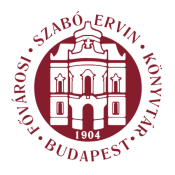Szatmári Gizella: Walks in the Castle District - Our Budapest (Budapest, 2001)
of Buda. Walled into its lower gate is the figure of a Gothic-style stone lion. As some sources have it, it was here, by the site of the former Kisajtó, or Small Gate, that László Hunyadi attempted to escape from the soldiers of the perfidious King Ladislas V. The place is also said to have been the point at which the Turkish army broke into the Castle in 1541. It is a pleasant surprise to find here the statue of St. George and the Dragon, a replica of the original in Prague (1904). This superb work of medieval (or early Renaissance) Hungarian sculpture was made by the brothers of Kolozsvár, Márton and György (1373). According to one hypothesis, the statue was taken to Prague as a gift from Louis the Great, but it is also possible that it had originally stood on the main altar of the Pozsonyszentgyörgy church and was transferred to the safety of Prague where it was protected from the Hussite threat. Szentháromság tér, the square outside the Matthias Church, was named for the plague memorial raised in gratitude to the intervening saints and the Holy Trinity. The monument in the middle of the square is the second statue of the same name, as the former, and smaller one made by Bernardo Feretti between 1700 and 1706 today stands in Zsigmond tér in District II. In 1710, during the second great plague afflicting the city, the Buda Council made a solemn pledge before the main altar of the church to raise, as soon as the pestilence was over, a monumental column both larger and more beautiful than the old one, to express the town’s gratitude for the celestial intervention. According to József Zoltán, the council, whose budget was stretched to the limit by the expenses related to raising the monument, set aside the fines for a variety of offences for a column fund. (For example, a certain Rast, a cartwright, was fined a hundred forints for adultery, while a goldsmith and a sculptor had to pay the respective sums of two and three forints for abusing each other in public.) The work, by Fülöp Ungleich, was executed between 1712 and 1714. The cluster of pillars is surrounded by figures of the saints—St. Roch, St. Christopher and St. Sebastian—protecting the town during the plague, together with further figures such as St. John of Nepo36
